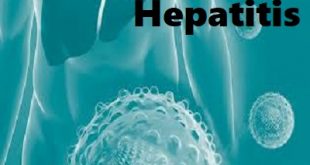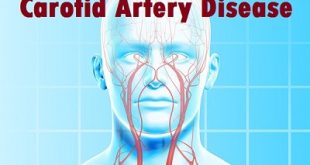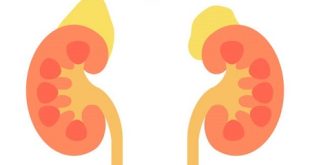Definition
Cholera is an acute bacterial infection of the intestine caused by ingestion of food or water containing Vibrio cholerae, serogroups O1 or O139. Symptoms include acute watery diarrhea and vomiting which can result in severe dehydration or water loss. When left untreated, death can occur rapidly – sometimes within hours.
Cholera is transmitted through contaminated food or drinking water, as well as by person-to-person contact through the faecal-oral route. Sanitary conditions in the environment play an important role since the V. cholerae bacterium survives and multiplies outside the human body and can spread rapidly where living conditions are crowded and water sources unprotected and where there is no safe disposal of feces.
Cholera Bacteria
Vibrio cholerae is a curved and a rod-shaped bacterium that is responsible for the cause of this disease. It is basically present in the free-living cells of living organisms and also found in coastal water areas. It also lives in the small intestine of the human body, being one of the major contaminants in the sewage.
SEM image of Vibrio cholerae
The contamination of drinking water owing to the human wasteful activities also leads to this disease. This bacterium in the small intestine releases an Exo-toxin in the body thus causes a flow of water and certain electrolytes such as the sodium bicarbonate, chloride, etc, into the small intestine.
- cholerae incubates between 2 hours and 5 days before causing symptoms, according to the WHO. Most of the time, symptoms appear within 2 to 3 days of exposure to the bacteria, according to the CDC
Mechanism of action
- Once the bacteria is ingested on eating contaminated food or water, it has to survive the journey through the digestive tract.
- Around two-thirds of the bacteria ingested can survive the strong acid that is produced by the lining of the stomach walls.
- Once these bacteria pass into the small intestine, they begin to produce long tail-like structures called flagella that help them propagate and move through intestinal mucus until they reach the intestinal walls.
- On reaching the intestinal walls, the bacteria produce finger-like projections called fimbriae or pili on their surface which they use to hold on to the intestinal walls.
- Here, the bacteria start to produce the toxic proteins that cause watery diarrhea and this acts as a vessel for carrying out new multiplying bacteria into the external environment where it may be ingested by another host.
- Symptoms of cholera may begin within as little as 2 hours after infection or as much as 5 days afterward.
Ancient history about cholera
The word cholera is from Greek: χολέρα kholera from χολή kholē “bile”. Cholera likely has its origins in the Indian subcontinent as evidenced by its prevalence in the region for centuries. Early outbreaks in the Indian subcontinent are believed to have been the result of poor living conditions as well as the presence of pools of still water, both of which provide ideal conditions for cholera to thrive.
The disease first spread by trade routes (land and sea) to Russia in 1817, later to the rest of Europe, and from Europe to North America and the rest of the world. Seven cholera pandemics have occurred in the past 200 years, with the seventh pandemic originating in Indonesia in 1961
Global epidemiology
Cholera first emerged from the Ganges Delta of the Indian subcontinent as early as the nineteenth century, and later swept the world in the form of seven pandemics since 1817. The current seventh pandemic was caused by the El Tor biotype of V. cholerae serogroup O1 which began in Indonesia in 1961 and subsequently spread to Africa and the Americas in 1970 and 1991 respectively. Today, V. cholerae O1 primarily accounts for the majority of cholera outbreaks worldwide and remains endemic in much of
Africa and Asia. In 1992, a novel serotype O139 emerged in India and spread rapidly into Bangladesh and neighboring countries in Asia. The strain was classified as O139 Bengal and was later shown to be a genetic derivative of the seventh pandemic O1 strains clone with its replacement of the O antigen.
Distribution of cholare among worldwide
For the past decade, cholera has been largely confined to developing countries in the tropics and subtropics, especially in parts of Asia, Africa, and South and Central America where clean water and sanitation measures are lacking. The global incidence of cholera has been on a steady increase in recent years. In 2009, a total of 45 countries reported 221,226 cases to the WHO, an increase of 16% compared with 190,130 cases in 2008.
Yet there was a slight decline in the overall case fatality rate from 2.7% (5143 deaths) in 2008 to 2.24% (4,946 deaths) in 2009 (24, 25). Africa alone accounted for 98% of the cholera cases (217,333 cases) and 99% of the deaths worldwide (4883 cases), while 1902 (0.86%) cases were reported from Asia. Of the 55 outbreaks of acute diarrhea disease verified by WHO, 47 were confirmed as cholera outbreaks in 29 countries, of which 38 (80.8%) occurred in Africa and 9 (19.1%) in Asia.
Causes of transmission
- Vibrio cholerae is the causative agent responsible for cholera. It is a bean-shaped bacterium with a long tail that it uses for self-propulsion.
- The bacteria are transmitted between humans through the fecal-oral route; a bite of contaminated food or a sip of contaminated water can cause infection.
- More specifically, a toxin secreted by the bacteria, which targets receptors in the human intestine, is responsible for the pathology characteristic of the disease.
- Uncontrolled water sources such as wells, lakes, ponds, streams, and rivers pose a great threat.
- Contaminated Food Drinks: Ingestion of contaminated food and drinks have been associated with outbreaks of cholera.
- Bottle feeding could be a significant risk factor for infants. Fruits and vegetables washed with contaminated water can be a source of infection.
- After preparation, cooked food may be contaminated through contaminated hands and/or flie
Are You at Risk?
Anyone can become sick with cholera. However, a few factors may make you more likely to catch cholera and more likely to have a more severe case. These risk factors include:
- Unclean conditions (such as poor sanitation and contaminated water)
- Low levels of stomach acid (cholera bacteria cannot live in highly acidic environments)
- Sick household members
- Type O blood (it’s not clear why this is true, but more people with this blood type seem to be at risk for cholera)
- Eating raw shellfish (if the shellfish live in dirty waters where the cholera bacteria live, there is greater risk of becoming ill)
Symptoms
The primary symptoms of cholera:
- Profuse diarrhea sometimes called “rice water stools”
- Abdominal pain
- Vomiting
- Leg cramps
- Rapid pulse
- Unusual sleepiness
- Lethargy
- Nausea
- Excessive thirst, lack of tears, and low urine output
These symptoms start suddenly, usually one to five days after infection, and are the result of a toxin produced by the Vibrio cholerae bacterium that compels profuse amounts of fluid from the blood supply into the small and large intestines.
An untreated cholera patient may produce several gallons of diarrhoeal fluid a day. Due to this rapid loss of fluids, severe dehydration and shock can occur in these individuals. Shock occurs due to the collapse of the circulatory system and if the fluid is not replaced, the patient may die within several hours.
Signs of dehydration include:
- Loss of skin plasticity
- Sunken eyes
- Fast heartbeat
- Low blood pressure
- Rapid weight loss
What Are Complications of Cholera?
- The complications of untreated cholera are mainly shock and death from massive fluid loss
- Massive electrolyte loss can lead to lethal cardiac rhythm disturbances and seizures
- Low blood sugar
- Low potassium levels
- Kidney failure
- Hypovolaemic shock
- Food poisoning
- Secretory diarrhea
- Hypoglycemia
- Sepsis
- Bowel complications
- Premature labor or miscarriage
- Severe hypokalemia
- Circulatory collapse
Cholera diagnosis
A diagnosis of cholera involves the following:
- Assessment of symptoms which typically include watery diarrhea along with nausea, vomiting, and abdominal cramps. With time, diarrhea and vomiting leave the patient feeling listless and dehydrated.
- The culture method is the gold standard or most recommended test for the diagnosis of cholera. Stool samples taken from a patient using a sterile cotton bud are placed on a plate containing TCBS (thiosulphate citrate bile salts) agar, a selective medium that isolates the bacteria from diarrhea. On incubation, Vibrio cholerae appear as yellow clumps which are then analyzed to detect the exact strain of cholera. This definitive diagnosis allows cholera to be distinguished from other bacterial, protozoal or viral causes of dysentery.
- In areas where cholera is endemic, rapid immunochromatographic dipstick testing is often available. This involves placing a dipstick strip into a stool sample and reading the lines it then displays. Cholera is confirmed if two red lines appear on the dipstick, whereas it is ruled out if only one line appears. It takes between 2 and 15 minutes for the test to make a diagnosis.
- Diagnosis can also be made on testing blood for antibodies against Vibrio cholerae.
- Although over 100 serogroups (based on cell surface antigens) of Vibrio cholerae have been identified, only two are responsible for cholera epidemics. These include serogroup O1 and serogroup O139. Serogroup O1 can be divided further into biotypes El Tor and Classical, that are further divided into subtypes Inaba, Ogawa, and Hikojima. Until 1992, only serotype 01 was known to cause cholera but later that year large outbreaks in India and Bangladesh were found to be caused by the O139 serotype.
Treatment
- If you think that you might have cholera, immediately start drinking oral rehydration solutions (made from purified water, sugar, and salts) on your way to the hospital or doctor.
- More severe cases of dehydration when a person cannot drink even small sips require IV fluids.
- To prevent vomiting, drink frequently but drink small amounts. If you do not have access to medical care, self-treat with an antibiotic for travelers’ diarrhea.
- Antibiotic treatment of infected individuals is also used to shorten the course of illness and the duration of shedding of the bacteria in the stool. Effective antibiotics against cholera include tetracycline, doxycycline (Vibramycin), sulfa drugs such as trimethoprim (Primsol) and trimethoprim/sulfamethoxazole (Bactrim), ciprofloxacin (Cipro), erythromycin (Ery-Tab), and azithromycin (Zithromax).
- Vaccination is an important tool in outbreak control. The World Health Organization stocks two oral cholera vaccines (Dukoral and Shanchol) that have been used successfully in mass vaccination campaigns.
Protect yourself from Cholera
Drink and use safe water.
- Bottled water with unbroken seals and canned/bottled carbonated beverages are safe to drink and use.
- Use safe water to brush your teeth, wash and prepare food, and to make ice.
- Clean food preparation areas and kitchenware with soap and safe water and let dry completely before reuse.
To be sure water is safe to drink and use:
- Boil it or treat it with a chlorine product or household bleach.
- If boiling, bring your water to a complete boil for at least 1 minute.
- To treat your water with chlorine, use one of the locally available treatment products and follow the instructions.
- If a chlorine treatment product is not available, you can treat your water with household bleach. Add 8 drops of household bleach for every 1 gallon of water (or 2 drops of household bleach for every 1 liter of water) and wait 30 minutes before drinking.
- Always store your treated water in a clean, covered container.
Wash your hands often with soap and safe water.
- Before you eat or prepare food.
- Before feeding your children.
- After using the latrine or toilet.
- After cleaning your child’s bottom.
- After taking care of someone ill with diarrhea.
- If no soap is available, scrub hands often with ash or sand and rinse with safe water.
Use latrines or bury your feces (poop); do not defecate in any body of water.
- Use latrines or other sanitation systems, like chemical toilets, to dispose of feces.
- Wash hands with soap and safe water after defecating.
- Clean latrines and surfaces contaminated with feces using a solution of 1 part household bleach to 9 parts water.
What if I don’t have a latrine or chemical toilet?
- Defecate at least 30 meters (98 feet) away from any body of water and then bury your feces.
- Dispose of plastic bags containing feces in latrines, at collection points if available, or bury it in the ground.
- Do not put plastic bags in chemical toilets.
- Dig new latrines or temporary pit toilets at least a half-meter (1.6 feet) deep and at least 30 meters (98 feet) away from any body of water.
Cook food well, keep it covered, eat it hot, and peel fruits and vegetables.
- Boil it, Cook it, Peel it, or Leave it.
- Be sure to cook seafood, especially shellfish, until it is very hot all the way through.
- Avoid raw foods other than fruits and vegetables you have peeled yourself.
Clean up safely— in the kitchen and in places where the family bathes and washes clothes.
- Wash yourself, your children, diapers, and clothes, 30 meters (98 feet) away from drinking water sources
Cholera vaccine
- There are currently three cholera vaccines recommended by the World Health Organization (WHO). These are Dukoral, Shanchol, and Euvichol.
- All three require two doses to give full protection.
- Dukoral needs to be taken with clean water, and it provides roughly 65 percent protection for 2 years. Shanchol and Euvichol do not need to be taken with water, and they provide 65 percent protection for 5 years. All the vaccines offer higher protection nearer to the time they are given.
 Diseases Treatments Dictionary This is complete solution to read all diseases treatments Which covers Prevention, Causes, Symptoms, Medical Terms, Drugs, Prescription, Natural Remedies with cures and Treatments. Most of the common diseases were listed in names, split with categories.
Diseases Treatments Dictionary This is complete solution to read all diseases treatments Which covers Prevention, Causes, Symptoms, Medical Terms, Drugs, Prescription, Natural Remedies with cures and Treatments. Most of the common diseases were listed in names, split with categories.








this dictionary is very fantastic for me
this is highly educative in interesting for every one to have on his/her gadget..
this app makes me happy because i do normal use it to make notice
during cholera time is it safe to use a swimming pool
No should avoid using swimming pools and any stagnant water.
very educative